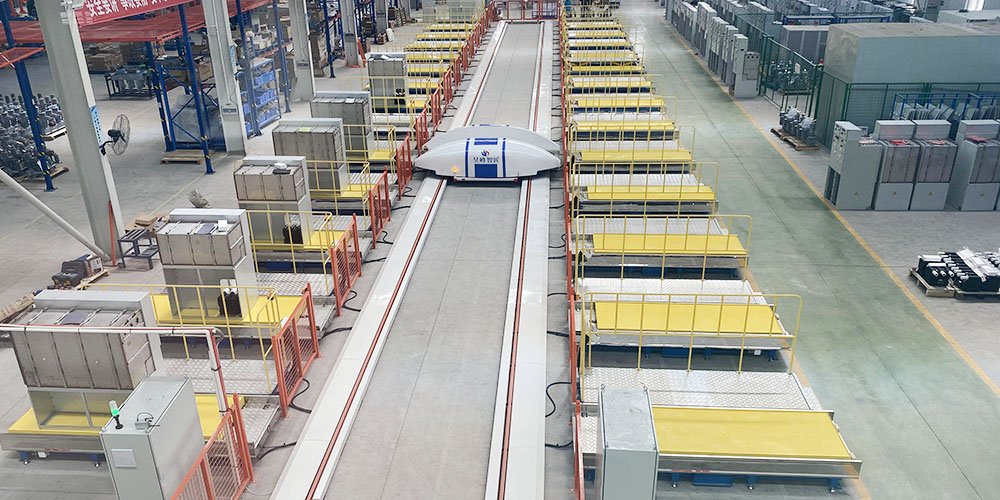Ring main units assembly production line

The assembly production line process for ring main unit (RMU) switchgear involves a series of steps designed to ensure the quality and reliability of the equipment. Here is a general overview of the process:
- Material Preparation:
- Gather all necessary components and materials, including switchgear bodies, insulating materials, conductors, and protective devices.
- Inspect the materials to confirm they meet the required specifications and quality standards.
- Component Assembly:
- Assemble the individual components of the RMU, such as the switchgear body, insulators, and conductors.
- Ensure that all components are correctly positioned and securely fastened according to the design specifications.
- Installation of Protective Devices:
- Install protective devices such as circuit breakers, earthing switches, and surge arresters.
- Verify that the protective devices are correctly connected and aligned with the switchgear’s electrical system.
- Conductor Connection:
- Connect the conductors to the switchgear terminals and protective devices, ensuring proper electrical contact and insulation.
- Perform resistance tests to confirm the quality of the connections.
- Insulation and Grounding:
- Apply insulating materials to prevent electrical arcing and ensure the safety of the RMU.
- Establish the grounding system to protect the switchgear and connected equipment from electrical faults.
- Assembly of Auxiliary Systems:
- Install auxiliary systems such as control panels, communication interfaces, and monitoring devices.
- Test the functionality of these systems to ensure they integrate seamlessly with the RMU.
- Final Assembly and Adjustment:
- Complete the assembly of the RMU by installing any remaining components and adjusting the system as needed.
- Conduct a thorough inspection to ensure that all parts are correctly assembled and that there are no safety hazards.
- Electrical Testing:
- Perform a series of electrical tests, including insulation resistance tests, continuity tests, and load tests, to verify the performance and safety of the RMU.
- Address any issues identified during testing before proceeding to the next step.
- Quality Control Inspection:
- Conduct a final quality control inspection to ensure that the RMU meets all design and manufacturing standards.
- Check for any cosmetic defects or damage that may have occurred during assembly.
- Packaging and Shipping:
- Package the RMU for transport, ensuring that it is protected from damage during shipping.
- Prepare the necessary documentation and ship the RMU to the customer or designated location.
Throughout the assembly process, it is crucial to follow the established production line process and quality control procedures to ensure the RMU switchgear’s reliability and safety. The use of automation and advanced manufacturing techniques can enhance efficiency and consistency in the production of RMU switchgear.
